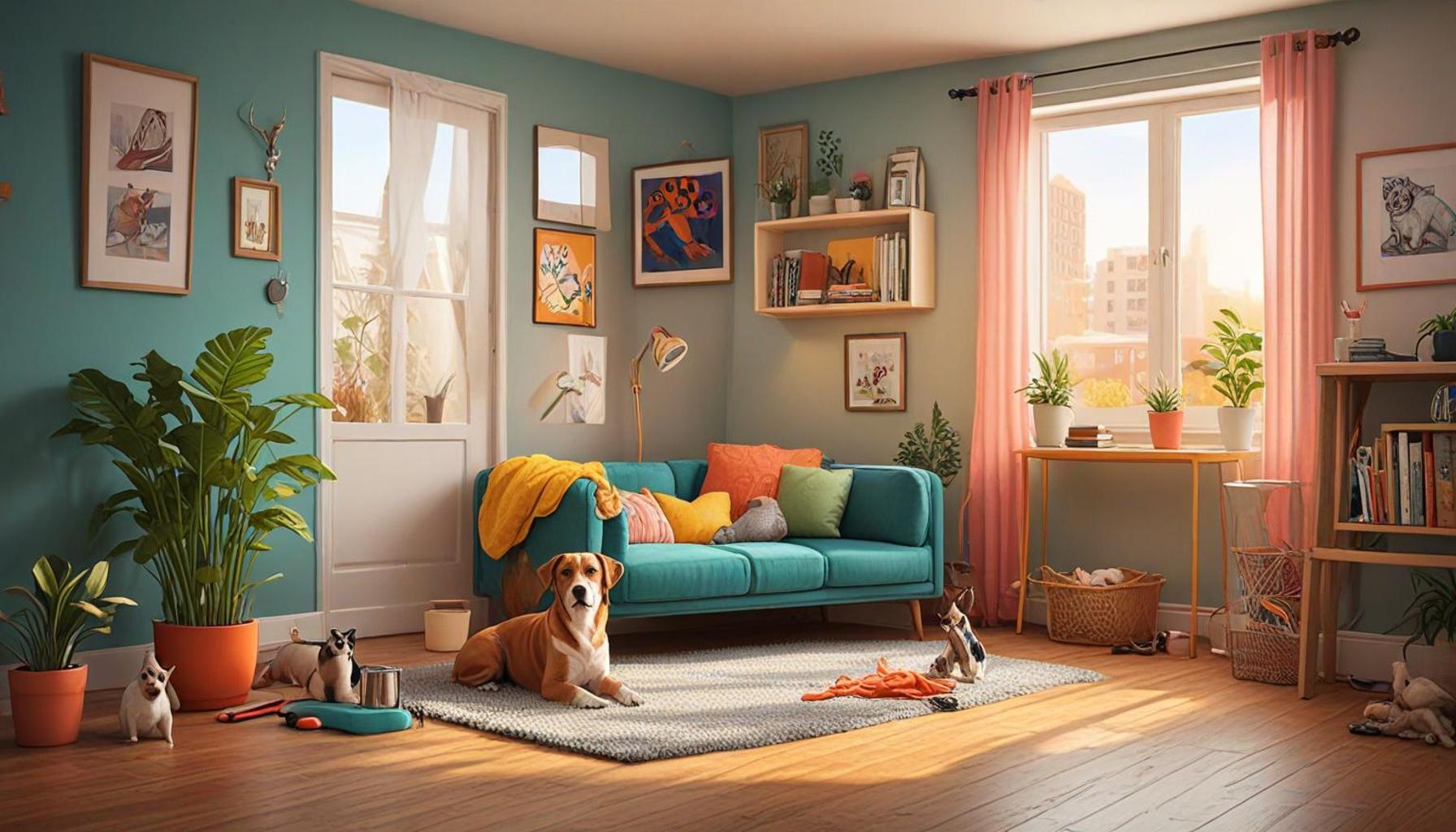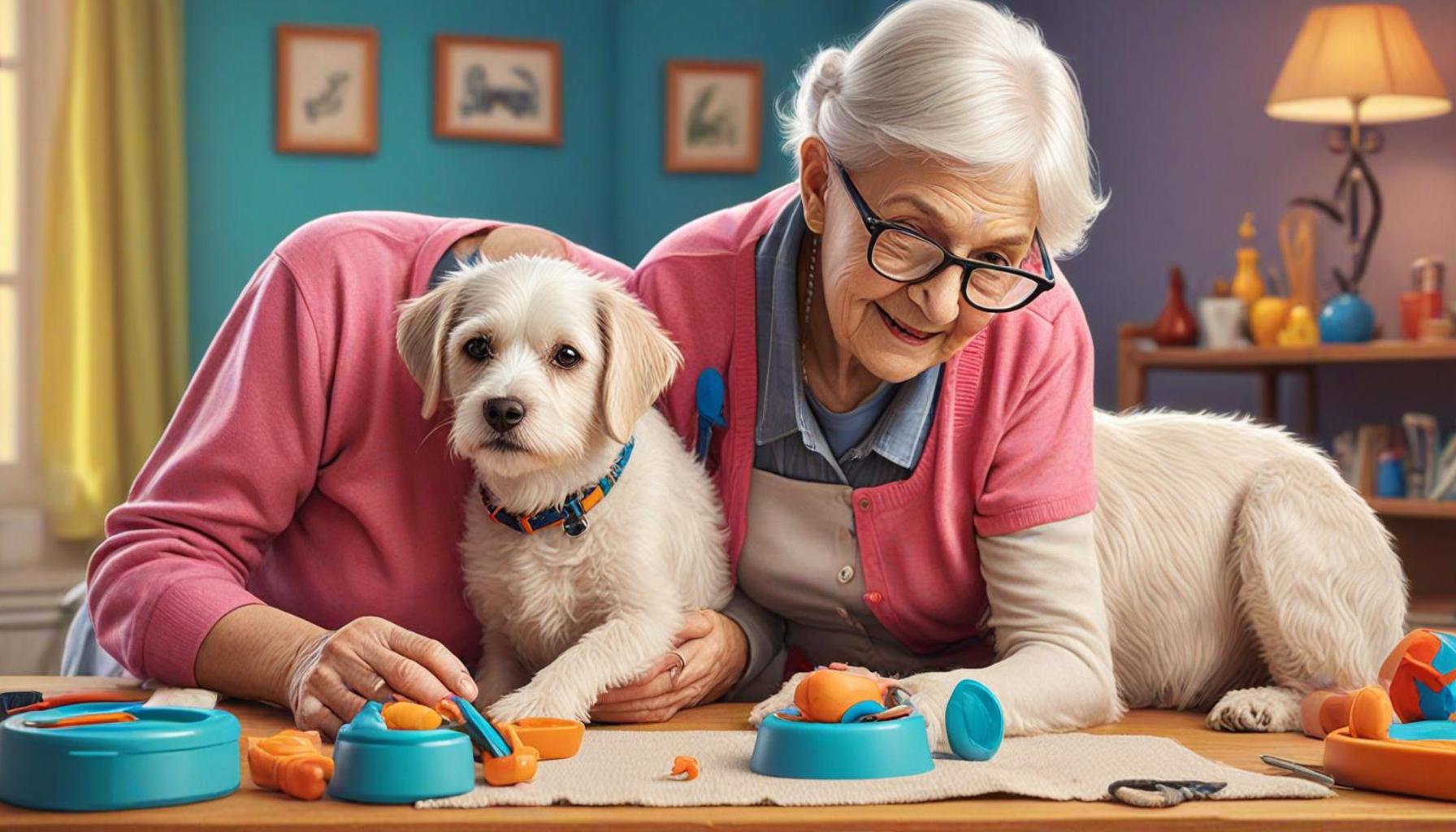Pet Training in Small Spaces: Effective Strategies for Apartments

Introduction to Pet Training in Apartments
Living in an apartment often means navigating the complexities of limited space and shared environments, which can pose distinct challenges for pet training. Nonetheless, with the application of effective strategies, it is entirely possible to forge a harmonious atmosphere for both you and your furry friends. This understanding is particularly pivotal in Nigeria, where many pet owners face the necessity of training within the confines of their homes.
Effective pet training in small spaces is essential for various reasons that can significantly influence the well-being of both pet and owner. These include:
- Limited space for exploration and exercise, which can lead to behavioral issues if not addressed properly.
- Noise restrictions that can dictate how training techniques are implemented, especially in multi-unit residences.
- Ensuring safety in a confined environment, where pets may encounter hazards unique to apartments, such as access to electrical cords or small balconies.
In Nigeria, it is increasingly common for pet owners to grapple with these challenges while attempting to train their dogs or cats. However, a nuanced approach, which includes a keen understanding of your pet’s unique needs, is vital in overcoming these obstacles. Here are several key aspects to keep in mind:
- Utilizing vertical spaces can keep pets engaged and stimulated. Installing shelves or cat trees encourages climbing and exploration, while also expanding their play area without requiring more floor space.
- Incorporating interactive toys not only combats boredom but also provides significant mental stimulation. Toys that dispense treats or require problem-solving can occupy a pet’s mind, reducing disruptive behaviors that might arise from confinement.
- Establishing a consistent routine for training sessions helps reinforce learning and behavior. Scheduling short, frequent training sessions at the same time each day can make the process more effective and manageable.
The absence of outdoor space in many apartments makes it imperative to adapt traditional training techniques. For instance, leash training can be practice indoors, allowing your dog to become familiar with the sensation of walking with a leash without the distractions found outside. Moreover, employing basic commands like ‘sit’, ‘stay’, and ‘come’ in a controlled environment enhances both your pet’s responsiveness and safety.
In conclusion, the journey of pet training within the confines of an apartment need not be a daunting task. By leveraging vertical spaces, utilizing interactive toys, and adhering to a structured routine, you can cultivate an environment where your pets thrive, ensuring they remain well-behaved, healthy, and above all, happy. As you embark on this journey, remember that patience and creativity are your best allies in fostering a fulfilling life for both you and your pets.
CHECK OUT: Click here to explore more
Creating an Optimal Training Environment
Training pets in small spaces requires ingenuity and an understanding of your pet’s behavior. In Nigeria, where apartments often come with unique layouts and limited outdoor access, adapting training methods can make all the difference in nurturing a friendly and well-adjusted companion. Here are some pivotal strategies to consider when developing an effective training regimen for your pets in these compact environments:
- Maximize Indoor Activities: Creating an engaging indoor playground for pets is essential. Small living spaces can still be transformed into vibrant training arenas through the use of agility equipment, like tunnels or weave poles. Implementing short but engaging obstacle courses with everyday items can help stimulate your pet’s mind and body.
- Teach Commands in Familiar Spaces: Since outdoor distractions can be overwhelming, practicing basic commands such as ‘sit,’ ‘down,’ and ‘stay’ within the familiar confines of your apartment helps reinforce learning. Use a positive tone and rewards to ensure that your pet associates learning with pleasure.
- Gradual Exposure to the Outdoors: If your pet enjoys outdoor adventures, consider incorporating step-by-step exposure to new environments. Start with short trips to nearby parks or courtyards, slowly increasing the duration and complexity of walks as your pet becomes more comfortable and responsive to commands.
- Interactive Training Sessions: Training should be a fun and rewarding experience. Utilize treats and toys to build motivation, and try to keep training sessions brief—around 5 to 10 minutes—to maintain your pet’s focus. Incorporating tricks or games, such as ‘hide and seek,’ can invigorate these mini lessons.
Additionally, it’s paramount to consider your neighbors during training sessions, especially if you own dogs known for their vocal nature. Teaching your pets to respond to commands quietly and calmly will not only enhance their training but also foster harmonious living in multi-unit residences. The *“leave it”* command, for example, is excellent for redirecting attention when distractions arise.
When dealing with cats, keeping training sessions engaging can be equally rewarding. Use clicker training and reward-based methods to teach various behaviors, from using a litter box to navigating tricky furniture. Cats are naturally curious, and leveraging their exploration instincts can be key to effective training.
Another vital consideration is the installation of safety measures within your apartment. Ensuring that electrical cords are tucked away, windows are securely fastened, and balconies are pet-proofed will create a safe environment conducive to training. Integrating safety with training will not only protect your pet but also promote a peace of mind for you as an owner.
In summary, while training pets in an apartment may pose challenges, it opens the door to creative problem-solving and innovative techniques. By maximizing indoor activities, using gradual outdoor exposure, and ensuring safety, you can create a thriving environment that supports the growth of your furry companions. Remember, the key to successful pet training in small spaces lies in patience, creativity, and consistency.
As pet owners in urban environments often face unique challenges, implementing effective training strategies specifically tailored for small living spaces is essential. Training your pet not only enhances their behavior but also strengthens the human-animal bond, ultimately leading to a more harmonious home. In this section, we delve into various techniques that can be readily applied in apartments to ensure your furry friends thrive, regardless of their surroundings.
| Training Method | Benefits |
|---|---|
| Positive Reinforcement | Builds trust and encourages desired behaviors effectively. |
| Short Training Sessions | Keeps pets engaged and focused, avoiding frustration. |
| Interactive Toys | Stimulates mental engagement, perfect for small spaces. |
| Leash Training | Promotes good behavior during walks, reducing stress. |
Implementing these strategies not only aids in preventing common behavior issues found in confined spaces but also provides your pet with a fulfilling and dynamic environment. With patience and consistency, apartment dwellers can successfully train their pets to adapt to a smaller living area while still enjoying a happy and healthy life. From harnessing the power of positive reinforcement to leveraging interactive toys, each method plays a crucial role in developing well-mannered pets that adjust seamlessly to apartment life.
YOU MAY ALSO LIKE: Read read another article
Leveraging Resources for Effective Training
In the fast-paced urban environment of Nigeria, pet owners often find themselves navigating the challenges of limited space for training. However, taking a creative approach to utilizing available resources can lead to successful outcomes in training. Here are some innovative strategies that can enhance your pet-training efforts in small apartments:
- Utilize Online Resources: The digital age provides an abundance of online training videos and articles that cater specifically to pet training in small spaces. Platforms like YouTube host channels dedicated to pet training, offering guidance on various methods, including positive reinforcement and clicker training tailored for minimal space. Online forums and social media groups can also serve as valuable communities where pet owners share experiences and tips, making it easier to navigate the training process.
- Partner with Local Trainers: Engaging a pet trainer who is experienced in apartment living is a wise investment. Many trainers offer personalized advice, taking into account your unique living situation. Some may even provide virtual training sessions, which can be a convenient and effective way to learn the best practices for training your pet within the confines of your apartment.
- Create a Consistent Routine: Pets thrive on routine, especially in small spaces where changes can contribute to anxiety. Establishing a consistent daily schedule that includes designated training times, feeding, and play can help your pet feel secure. Incorporating training into regular activities, such as during feeding time or after walks, can also reinforce learning without taking up additional space or time.
- Utilizing Vertical Space: Small apartments often have limited ground space, but vertical space can be used to your advantage. Invest in shelves or climbing structures that engage your pet’s natural climbing instincts. Training your cat or dog to navigate these features not only provides exercise but also encourages problem-solving skills and boosts their confidence.
In addition to these techniques, it’s essential to foster a strong bond between you and your pet during training. Pets are more likely to respond positively when they feel secure and connected to their owners. Spending quality time through interactive play and gentle handling not only aids in their training but also enriches their emotional well-being. Utilizing methods such as “five-minute” sessions throughout the day is effective; short bursts of training can maintain focus and enthusiasm.
Moreover, incorporating environmental enrichment into the living space can help reduce boredom, leading to fewer behavioral issues during the training process. Items such as puzzle toys, which can dispense treats when solved, offer mental stimulation while keeping your pet entertained and engaged. In densely populated areas where access to outdoor environments may be limited, ensuring your pet has stimulating activities within the apartment is crucial.
Finally, don’t overlook the significance of socialization, even within the limited space of an apartment. Providing opportunities for your pet to meet other animals and humans can enhance their behavior and adaptability. This could be organized through pet playdates with neighbors or local pet groups, creating a friendly environment that encourages interaction without requiring extensive outdoor space.
By effectively leveraging available resources and ensuring a structured yet flexible training approach, pet owners in Nigeria can overcome the challenges posed by smaller living spaces. The key is to remain patient, resourceful, and committed, as every pet learns at their own pace in an environment tailored to their needs.
YOU MAY ALSO LIKE: Read read another article
Conclusion: Making the Most of Your Space
In urban environments like Nigeria, where apartment living is increasingly common, pet training may seem daunting due to limited space. However, it is essential to remember that effective training can thrive in small areas with the right strategies and mindset. By leveraging online resources, connecting with local trainers, and establishing a consistent routine, pet owners can create a nurturing and educational atmosphere for their furry companions.
Moreover, maximizing vertical space not only provides physical engagement but also stimulates your pet’s problem-solving abilities. Utilizing innovative training methods and ensuring that interaction is part of daily life fosters a stronger bond between pets and their owners, significantly enhancing the effectiveness of the training process. Emphasizing socialization opportunities, even in confined spaces, allows pets to develop better manners and adaptability, enhancing their ability to thrive in urban settings.
Ultimately, embracing the challenges of small-space pet ownership requires creativity, patience, and dedication. With a proactive approach and by incorporating enrichment tools, urban dwellers in Nigeria can transform their apartments into exciting training grounds that meet their pets’ needs. As every pet learns at its pace, consistency and encouragement will pave the way for successful training that enriches the lives of both pets and owners. Remember, a well-trained pet in a small space isn’t just about obedience—it’s about fostering a joyful and harmonious living environment.


